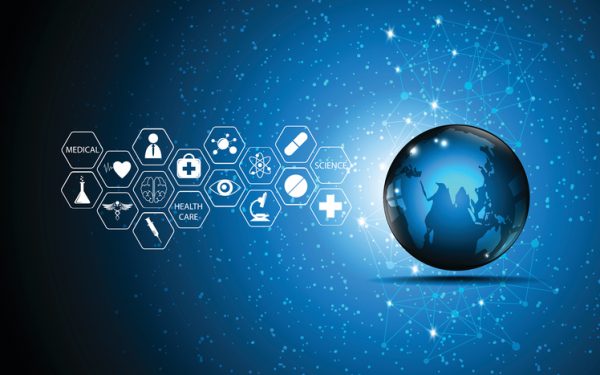
The designer Charles Eames famously said, “Never delegate understanding.” I wholeheartedly agree. But, as a leader, I also recognize the value and necessity of learning from those who are better equipped to dive deep into the new ideas, technologies, and capabilities that may – or may not – be critical to the future of our organization. As CEOs, it’s important that we keep a close eye on trends while our teams dig into the day-to-day applications. For the last decade, many of us have taken this approach to the emergence of artificial intelligence (AI).
AI isn’t a new concept in life sciences. For years, teams have used machine learning (ML), natural language processing (NLP), and other AI-associated capabilities to advance medical research and new treatments, as well as to promote administrative productivity. In the real-world data (RWD) space, we’ve seen AI algorithms applied to help extract information from electronic medical records (EMRs) and make life sciences companies more efficient in designing clinical trials.
Then ChatGPT launched in November 2022. It enabled users with no expertise in data science to enter extraordinarily specific and complex queries into a search bar and receive detailed, plain-language responses in seconds. Large language models (LLMs) seemed to open new avenues for working with data. It was a wake-up call for many company leaders, but the path forward seemed clear: either we learn very quickly to harness this new way of working – within our company, with our partners, and with our customers – or we fall behind.
So began an accelerated AI journey for the RWD and life sciences industries – and for individual companies and leaders, myself included. To CEOs navigating the changes and value AI may bring to their organization, I offer the following considerations to guide your AI exploration across three key aspects of your business: changing the ways our teams work, shifting the ways we engage with customers, and extending our reach to new partners.
Start by identifying opportunities for internal transformation
In looking at the ways AI and LLMs could increase internal productivity, it’s important to first focus on the area with the clearest potential. For those in the RWD space, this may be the data abstraction and curation process. When building a dataset today, teams of medical experts spend up to six hours abstracting data from a single medical record in the EMR – which includes removing any patient-identifying information, pulling out key data points, and identifying missing or potentially inaccurate data. When we extrapolate that to the thousands of records they need to assess, the effort translates to many thousands of hours and a significant percentage of operational costs. Given the drain it puts on organizations, this process presents a prime opportunity for exploring how fast-emerging AI capabilities could shorten timelines and reduce costs.
Structured data is already classified into defined fields within the EMR and is the most straightforward data to work with. It’s a great starting point for an LLM to build from, helping medical experts curate more data into a dataset faster. Once you have that down, then you can move onto more complex applications, such as using LLMs to pull information from the notes section of medical records – a function that wasn’t possible at any acceptable quality with earlier technologies, including NLP tools. Early results have been promising, proving that AI can allow us to do more with the resources we have and bring even more data to customers at a faster rate than ever before. As results continue to be published and the technology continues to develop, I expect to see data abstraction timelines shrink to just one-third of their current length and costs to halve.
Rethink the potential for AI-enabled customer engagements
AI explorations also show how RWD companies can empower life sciences customers to engage with their data in new ways. Typically, RWD studies are exclusively the domain of professionals with statistics and data science expertise, who create queries and package results. This is a lengthy process, and it excludes life sciences leaders without this technical knowledge – for example, the medical doctors leading Medical Affairs teams or accomplished molecular researchers in Clinical Development – from exploring the data themselves as they plan their clinical studies. LLMs simplify access to data, enabling teams to brainstorm together by typing questions into a search bar and receiving rapid answers about their target population or molecule. They can triage important queries faster, then dig deeper. Perhaps they start with, “How many multiple myeloma patients in this dataset also have diabetes?” Then they ask follow-up questions to learn how they were treated and their survival outcomes – all crucial questions that can contribute toward a case for an indication expansion or other opportunities.
LLMs could also help sponsors of research studies de-risk clinical trials with reliable insights. Today clinical trials have a 90 percent failure rate – which is due in part to limited access to data-driven insights and time it takes to run the process. I’ve experienced this firsthand during my time leading clinical trials at a life sciences company. We planned to use one treatment as the standard of care comparator to a new molecule, but by the time the trial began, the standard of care had changed. This was a costly error that we only realized after the study began. After just a few months, we had to shut down the study and eventually scrapped the molecule. If we had the tools to validate our assumptions with RWD, we could have adjusted the in-progress trial to reflect the right standard of care. This would have saved millions of dollars and countless hours of effort. In the near term, I see this as an area of impact for LLMs. With their help, we’ll be able to position trials for success and accelerate progress for the most promising therapies.
Create new customer groups and watch your impact grow
Looking to the future, CEOs should consider how AI can help empower new customer groups. It’s already enabling non-technical users to interact with RWD – who else can we involve in the cancer insights-generation process? Certainly, leaders responsible for life sciences investment and M&A could improve their understanding of the real-world usage of new molecules before acquiring them – including off-label use, clinical utilization, and patient outcomes. Oncologists could use AI to quickly consider new approaches to treatment based on real-world outcomes for patients like theirs, perhaps evolving the cancer treatment model. LLMs will create a new world of opportunity for domain experts to easily and efficiently explore data relevant to their field.
Embarking on an AI journey
We’re only at the start of our collective AI journey – I know I am. We’re navigating the costs and challenges associated with AI while finding success and new opportunities. Today we see AI as a tool to improve productivity and support customers. In the future, perhaps these models will also improve data privacy and protection by abstracting identifiable patient data before it could ever reach our eyes.
I challenge you, as I do myself, to participate in this process of understanding the potential of AI, particularly as more platforms like ChatGPT emerge. Try a variety of LLM-based tools yourself. Understand the risks, limitations, and who is working on putting quality frameworks and guardrails in place in your industry. Engage your employees and partners in discussions about what might now be possible. Use this moment as an opportunity to get closer to customers in the very human process of exploring – and maybe even understanding – what you can do with AI.
Photo: Pixtum, Getty Images
Miruna Sasu, Ph.D., MBA, is the President and CEO of COTA Healthcare, a leading real-world data (RWD) company specializing in cancer care. With over 20 years of experience in life sciences, Miruna is dedicated to making cancer care and clinical trials more accessible and affordable. Her vision is to leverage high-quality RWD and analytics to accelerate clinical trials and improve outcomes for cancer patients. Prior to COTA, she led digital health innovation at Bristol Myers Squibb and oversaw clinical trial feasibility and data science at J&J, driving global adoption of integrated RWD strategies. Miruna holds a Ph.D. in biology and statistics, as well as an MBA, and is recognized for advancing digital innovation and emerging technologies in drug development.
This post appears through the MedCity Influencers program. Anyone can publish their perspective on business and innovation in healthcare on MedCity News through MedCity Influencers. Click here to find out how.











